In times past, this west end of the main street was the ‘Old London Road’, lined with coaching inns. This three-storey building, the town’s oldest-surviving inn, was grade II listed in 1952. Over 300 years earlier, when the town’s charter was granted in 1623, The White Hart was ‘given its official licence as Okehampton’s premier inn, at the new Quarter Sessions’. It has held this licence ever since.
A photograph and text about The White Hart Hotel.
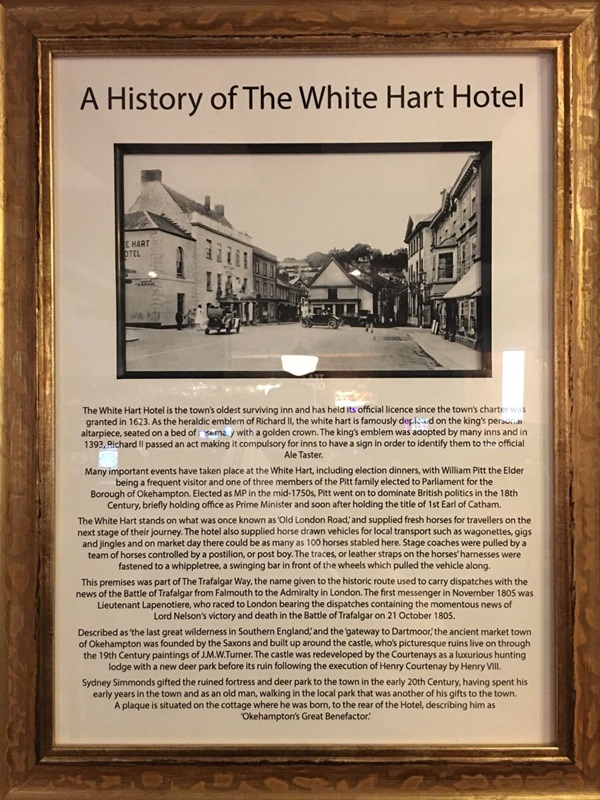
The text reads: The White Hart Hotel is the town’s oldest surviving inn and has held its official licence since the town’s charter was granted in 1623. As the heraldic emblem of Richard II, the white hart is famously depicted on the King’s personal altarpiece seated on a bed of rosemary with a golden crown. The King’s emblem was adopted by many inns and in 1393, Richard II passed an act making it compulsory for inns to have a sign in order to identify them to the official Ale Taster.
Many important events have taken place at The White Hart, including election dinners, with William Pitt the Elder being a frequent visitor and one of three members of the Pitt family elected to Parliament for the Borough of Okehampton. Elected as MP in the mid 1750s, Pitt went off to dominate British politics in the 18th century, briefly holding office as prime minister and soon after holding the title of 1st Earl of Catham.
The White Hart stands on what was once known as Old London Road, and supplied fresh horses for travellers on the next stage of their journey. The hotel also supplied horse-drawn vehicles for local transport such as wagonettes, gigs and jingles and on market day there could be as many as 100 horses stabled here. Stage coaches were pulled by a team of horses controlled by a postilion, or post boy. The traces, or leather straps on the horses’ harnesses were fastened to a whippletree, a swinging bar in front of the wheels which pulled the vehicle along.
These premises were part of The Trafalgar Way, the name given to the historic route used to carry dispatches with the news of the Battle of Trafalgar from Falmouth to the Admiralty in London. The first messenger in November 1805 was Lieutenant Lapenotiere, who raced to London bearing the dispatches containing the momentous news of Lord Nelson’s victory and death in the Battle of Trafalgar on 21 October, 1805.
Described as ‘the last great wilderness in southern England’, and the ‘gateway to Dartmoor’, the ancient market town of Okehampton was founded by the Saxons and built up around the castle, who’s picturesque ruins live on through the 19th century paintings of JMW Turner. The castle was redeveloped by the Courtenays as a luxurious hunting lodge with a new deer park before its ruin following the execution of Henry Courtenay by Henry VIII.
Sydney Simmonds gifted the ruined fortress and deer park to the town in the early 20th century, having spent his early years in the town and as an old man, walking in the local park that was another of his gifts to the town. A plaque is situated on the cottage where he was born, to the rear of the hotel, describing him as ‘Okehampton’s Great Benefactor’.
An original coaching horn.
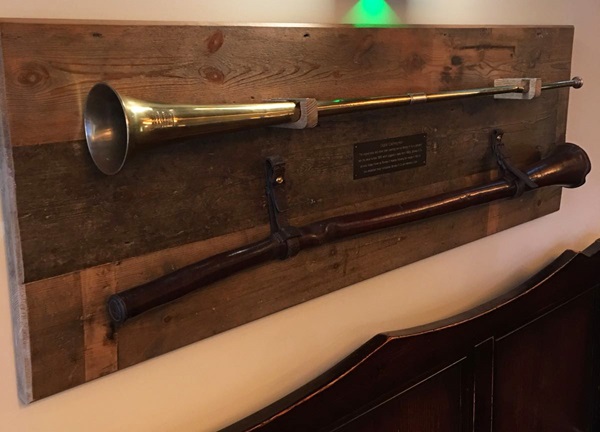
This original brass and nickel silver coaching horn by Boosey & Co is stamped with the serial number 36511, which suggests it dates from c1850. Boosey & Co still exist today, known as Boosey & Hawkes following the merger in 1930 of two respected music companies, Boosey & Co and Hawkes & Son.
An original pot created by Seth Harry, a wine and spirit merchant.
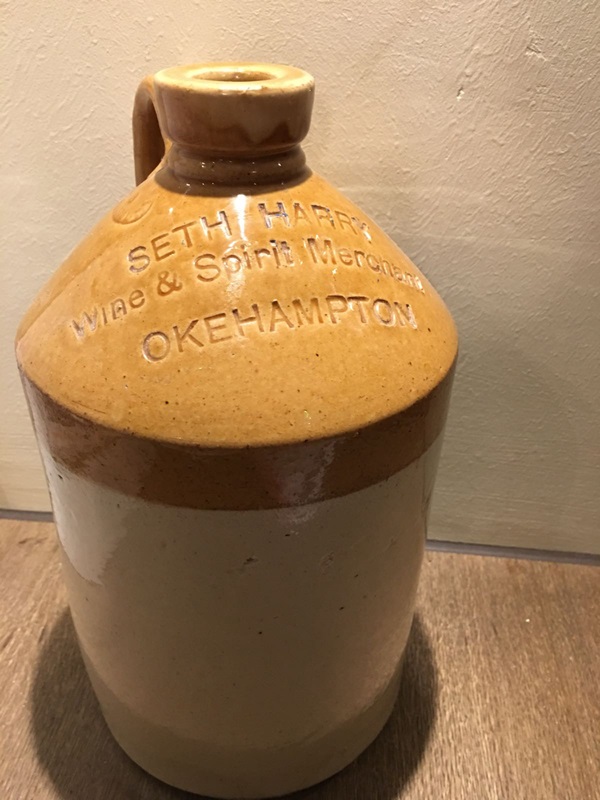
An original mangle created locally by John Cornish.
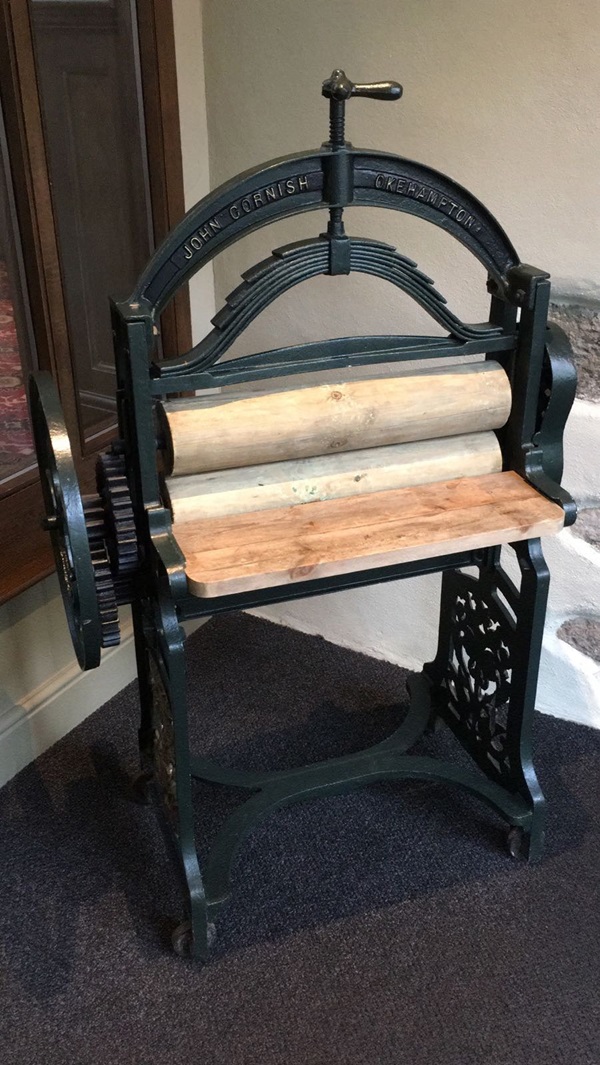
A photograph of The White Hart Hotel, Fore Street, Okehampton, c1960.
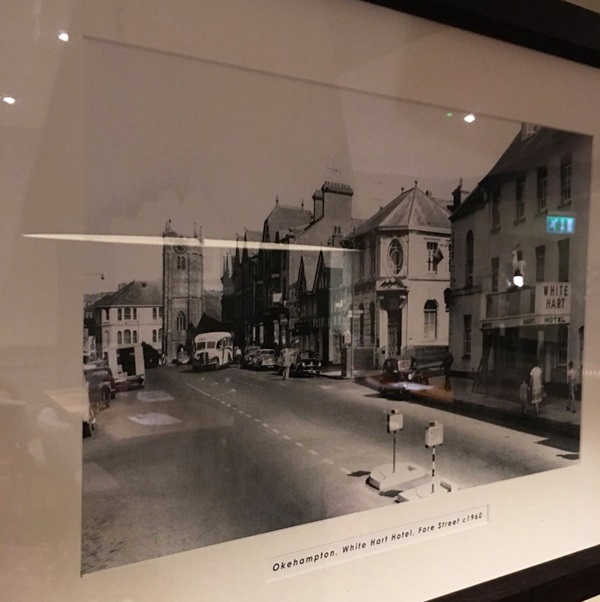
A photograph of Fore Street, Okehampton.
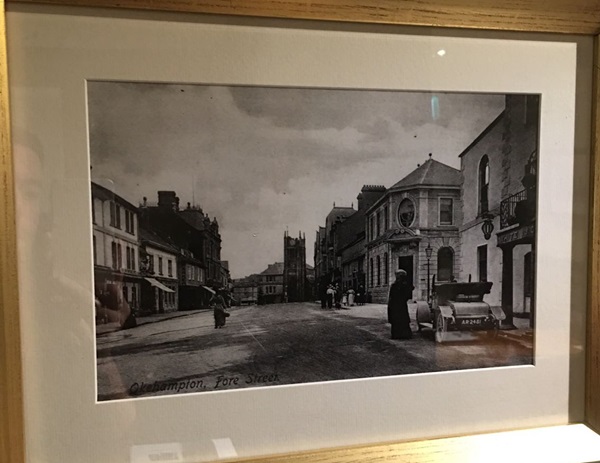
External photograph of the building – main entrance.
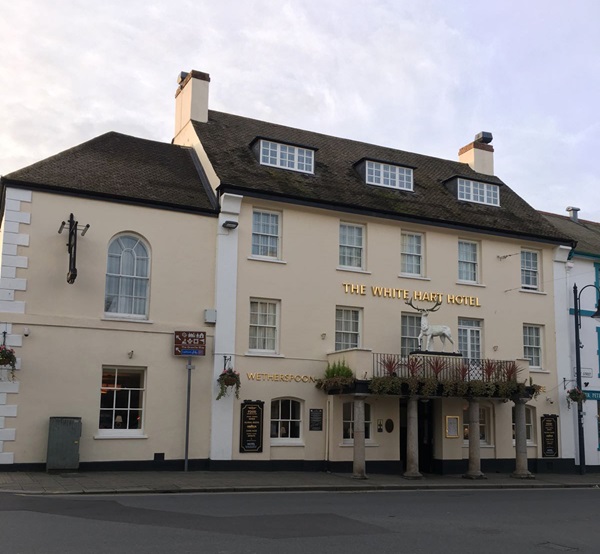
If you have information on the history of this pub, then we’d like you to share it with us. Please e-mail all information to: pubhistories@jdwetherspoon.co.uk